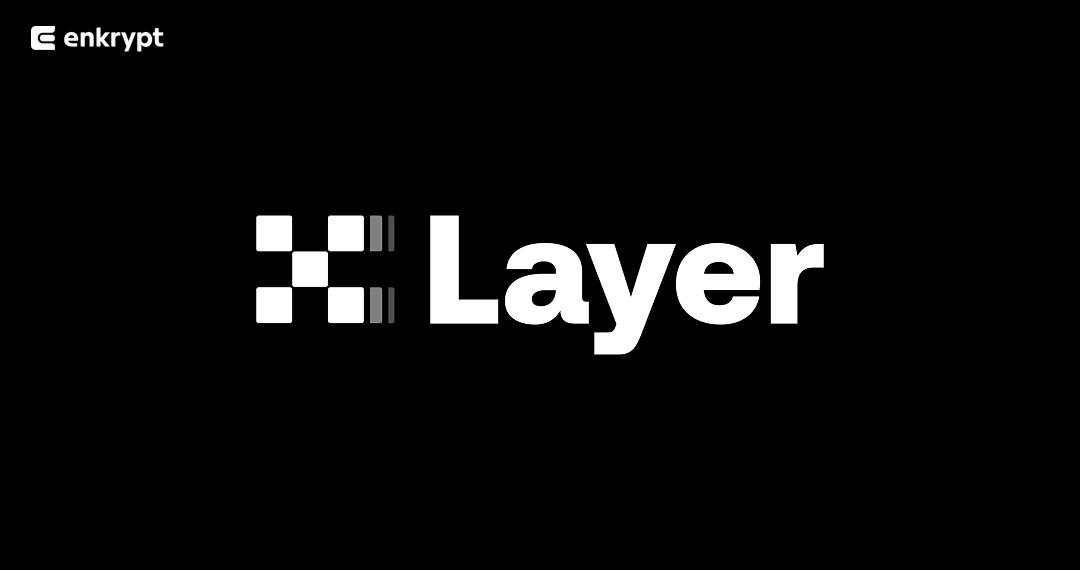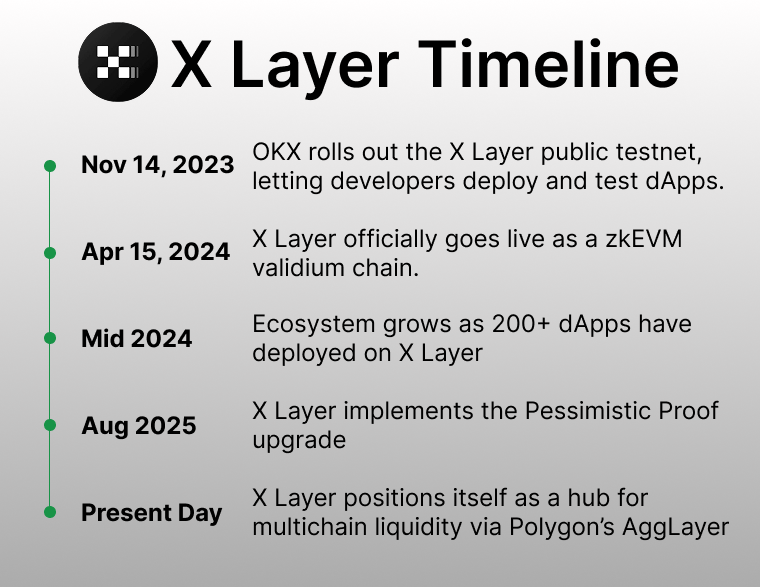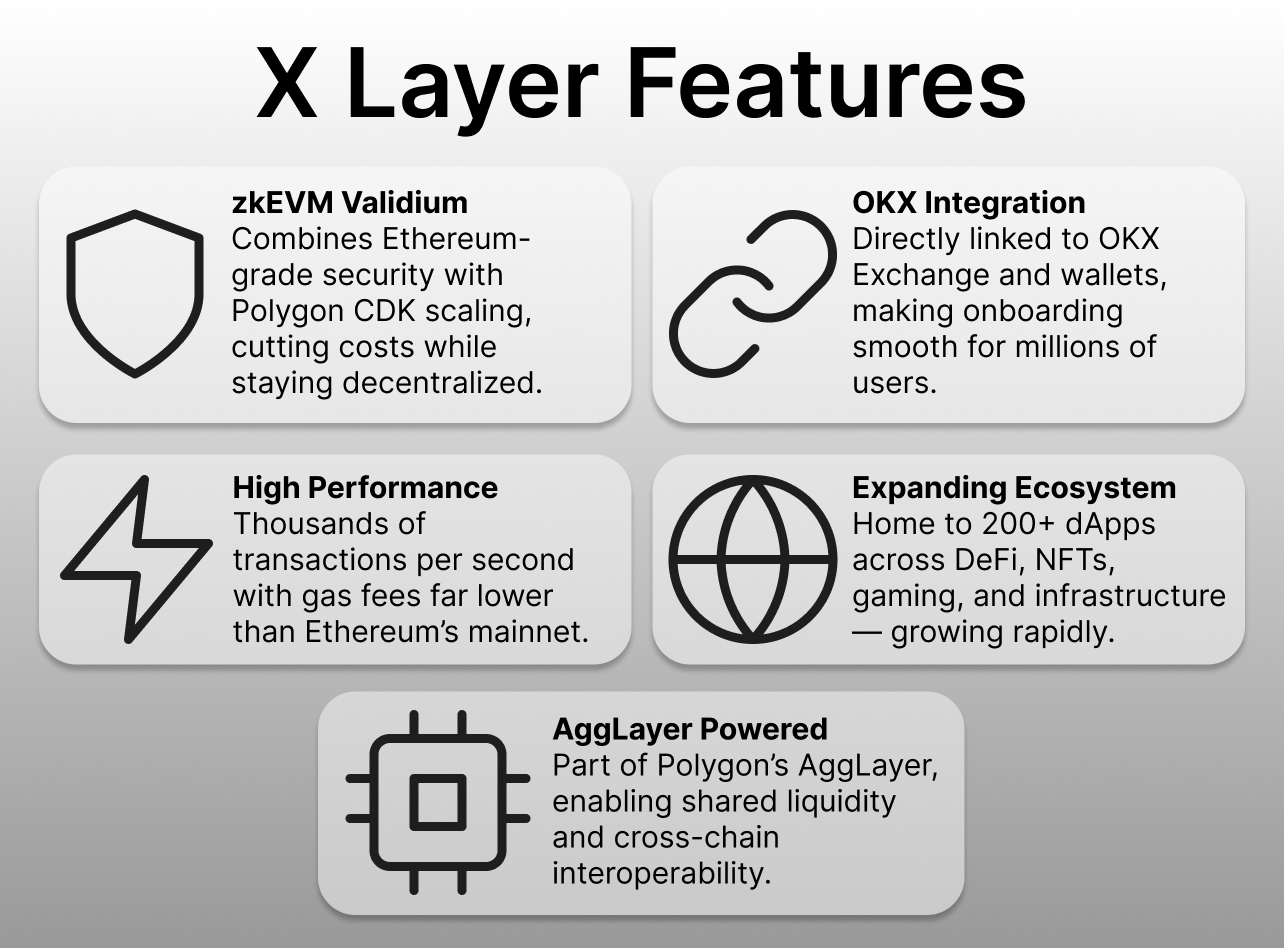X Layer: OKX’s ZK-Powered Network for the Multichain Era
X Layer is an Ethereum L2, a multichain hub developed by OKX and Polygon. X Layer is designed to seamlessly transition to and from Ethereum, OKX Exchange and more.

X Layer is a Layer-2 blockchain developed by OKX in collaboration with Polygon Labs. It’s built using Polygon’s Chain Development Kit (CDK) and powered by zero-knowledge proofs (zkEVM), making it fully compatible with Ethereum. In simple terms, X Layer is designed to bring Ethereum’s security and ecosystem benefits to users with faster transactions, lower fees, and seamless integration into OKX’s exchange and our Enkrypt wallet.
By positioning itself as a scalable and user-friendly network, X Layer acts as a bridge between OKX’s 50 million+ users and the decentralized web, giving traders, developers, and DeFi enthusiasts a high-performance on-chain experience.
History & Founding
The idea for X Layer began in late 2023, when OKX announced plans for its own Ethereum-compatible Layer-2. OKX, founded in 2017, is a global cryptocurrency exchange serving millions of users worldwide. The testnet launched in November 2023, giving developers a chance to experiment with deploying smart contracts and dApps.
The mainnet went live on April 15, 2024, marking the official debut of X Layer as part of OKX’s growing Web3 ecosystem. Built with Polygon’s CDK, the chain uses a zkEVM validium model, meaning it leverages zero-knowledge proofs for scalability while storing transaction data off-chain to reduce costs.
In August 2025, X Layer completed its PP Upgrade (Pessimistic Proof), boosting throughput to around 5,000 transactions per second (TPS) and lowering gas fees further. This upgrade demonstrated OKX’s commitment to making X Layer not just a side project, but a serious competitor in the Layer-2 space.
Did you know?
Pessimistic Proof, used by X Layer, is the opposite approach to the Optimistic Rollup model popularized by Optimism and Arbitrum. While Optimistic Rollups assume transactions are valid unless proven otherwise (with a dispute window), Pessimistic Proof verifies each batch upfront, providing faster finality and reducing reliance on challenge periods.

What Makes X Layer Unique
X Layer stands out among Ethereum Layer-2s because of a few key design choices and ecosystem integrations.
First, it is built as a zkEVM validium, which ensures Ethereum compatibility while keeping transactions fast and inexpensive. Developers can easily port their Ethereum smart contracts and dApps without major code changes, accelerating adoption.
Second, it’s constructed using Polygon’s CDK, which gives it access to the AggLayer—a framework that allows liquidity to flow more smoothly across all Polygon CDK-based chains. This reduces the problem of liquidity fragmentation, a common issue in multichain ecosystems.
Third, X Layer is deeply tied into the OKX ecosystem. The chain uses $OKB, the native token of OKX, for gas fees. It also connects directly with the Exchange and compatible wallets, making deposits, withdrawals, and asset bridging simple for users who may not be familiar with the complexities of Web3.
Finally, the PP Upgrade in August 2025 pushed X Layer’s performance to a new level, offering near-instant transactions at a fraction of the cost of Ethereum mainnet, which is crucial for scaling everyday crypto use cases.

How X Layer Is Used
For developers, X Layer offers a familiar, Ethereum-compatible environment to deploy dApps, from DeFi protocols to NFT marketplaces and gaming platforms. By being EVM-compatible, smart contracts can be migrated with little effort, lowering the barrier to entry.
For users, X Layer provides faster and cheaper transactions compared to Ethereum, making swaps, lending, staking, and everyday transactions more accessible. Its integration with OKX’s exchange and our Enkrypt wallet makes it easy for centralized exchange users to step into the decentralized world without friction.
For the broader ecosystem, X Layer is positioned as a hub for multichain activity. Its participation in Polygon’s AggLayer means assets and liquidity can move more fluidly across chains, helping unify liquidity and boosting capital efficiency.
Protocols & Projects on X Layer
Since launch, X Layer has quickly attracted a broad mix of protocols across DeFi, infrastructure, and Web3 applications.
- DeFi protocols such as Curve, QuickSwap, and Renzo bring liquidity and trading infrastructure.
- Bridging & interoperability projects like LayerZero and Wormhole enable smooth cross-chain transfers.
- Infrastructure providers including The Graph and EigenLayer enhance indexing, data availability, and security.
- A wide variety of wallets, NFT platforms, gaming projects, and socialFi applications have also been deployed, making the network diverse from day one.
At its public mainnet launch, X Layer already supported more than 200 dApps, a sign of how quickly it’s gaining traction in the Ethereum scaling landscape.
Final Thoughts
X Layer is more than just another Ethereum Layer-2. By combining zkEVM scalability, Polygon CDK’s interoperability, and OKX’s massive user base, it’s building a unique position in the blockchain ecosystem. Its low fees, high throughput, and deep integrations make it a strong candidate for onboarding the next wave of Web3 users—especially those coming from centralized exchanges.
As adoption grows, X Layer could play a central role in bridging traditional crypto traders with decentralized applications, making it a promising network to watch in the multichain era.
Thank you for checking out our article on the X Layer network! Don't forget to download Enkrypt for a seamless web3 multichain wallet experience. We would love to hear from you on our social media about any guide suggestions you have for the future. Also, if you enjoy using mobile cryptocurrency wallets, give our MEW Mobile app a try, it's available on both iOS and Android platforms!

